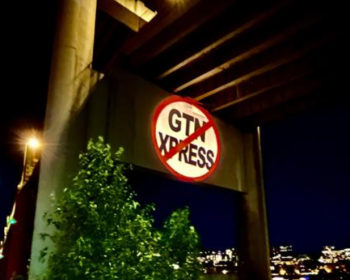A Review of a Trio of Federal Bills Promoting Renewable Energy on Federal Lands
Open gallery

The U.S. House of Representatives is considering a trio of bills to stimulate renewable energy development on federal lands. Two of these bills, H.R. 1363 and H.R. 2004, focus on geothermal energy development, while the third, H.R. 596, focuses on solar and wind energy development. Two of the bills, H.R. 2004 and H.R. 596, are sound policies that should successfully promote renewable energy while preserving the environmental and economic viability of U.S. public lands. However, H.R. 1363 would unwisely and unnecessarily sacrifice the federal environmental review process under the National Environmental Policy Act (NEPA). Congress should pass H.R. 2004 and H.R. 596, but should abandon H.R. 1363.
H.R. 1363 would exempt geothermal exploration from the NEPA review process. Under the bill, a leaseholder would need only to notify the Bureau of Land Management (BLM) 30 days before drilling a well to test geothermal energy productivity. The agency would then have 10 days to review the project to determine if it meets the bill’s criteria for an exempt geothermal exploration project. If so, the project would require no further environmental analysis. If not, the BLM would have to explain why the project does not meet the bill’s criteria and give the leaseholder the opportunity to amend the project and again seek to qualify for the NEPA exemption.
H.R. 1363’s exemption from NEPA would be a radical departure from the currently required environmental review of proposed geothermal energy projects. NEPA, which has guided federal agencies for more than forty years, not only requires a consideration of the proposed project’s environmental impacts, but also requires consideration of a significant range of alternative projects. However, under H.R. 1363, federal land managers would have neither a duty nor discretion to review a geothermal exploration project’s environmental impacts. Consequently, H.R. 1363 would deprive federal decision-makers and the public of information necessary to make sensible, informed decisions about the merits of geothermal exploration. In fact, the Department of the Interior opposes H.R. 1363 for precisely this reason. Fortunately, H.R. 1363 seems unlikely to pass, as only two representatives have agreed to sponsor it.
H.R. 2004, (a.k.a S. 363) also focuses on geothermal energy, but does so without sacrificing important principles of environmental review. This bill would allow viable geothermal energy projects to lease one neighboring parcel of up to 640 acres on a non-competitive basis. The bill aims to solve a simple, concrete problem: once a geothermal resource is proven, competitors can speculatively bid for leases of nearby plots of land, which can deter investment in geothermal exploration and may even threaten the ongoing viability of a proven resource by tapping into the same source of geothermal energy. By allowing geothermal leaseholders essentially to expand their existing leases, H.R. 2004 would deter this sort of speculation and promote geothermal energy development. Because the non-competitive leases would still be issued at fair market value, the budgetary impact should be minimal. H.R. 2004 is good renewable energy policy, and the Senate has already passed it. The House should pass it promptly.
The broadest of the three bills, H.R. 596 would open U.S. rangeland and national forests to competitive leasing for renewable energy development. Currently, renewable energy development on public lands proceeds through individual applications for rights of way under the Federal Land Policy and Management Act and the National Forest Management Act. The existing system is likely less efficient and less remunerative than H.R. 596’s proposed competitive bidding system. However, BLM testified to the House Subcommittee on Energy & Mineral Resources that the agency has already used its existing statutory authority to authorize construction of 52 large wind and solar projects, with nameplate capacity of over 10,000MW. Moreover, BLM also testified that it is already using existing authority to implement competitive bidding on certain land the agency deems especially suitable for solar power. This testimony from BLM reveals that the federal government is already working toward the goals of H.R. 596.
Still, H.R. 596 would still be a boon to renewable energy development for two important reasons. First, the bill would open for leasing far more land than BLM has already approved. BLM currently focuses on particular parcels of land, such as Solar Energy Zones, deemed best-suited for development. These Solar Energy Zones comprise roughly 285,000 acres. In contrast, H.R. 596 would open for competitive leasing all public lands except those that BLM or the Forest Service have formally excluded from solar or wind development. In other words, H.R. 596 would make available vastly more land for renewable energy leases.
Second, H.R. 596 would establish a royalty-splitting scheme that would attract broad support for renewable energy development by benefitting states, local governments, federal agencies, and the environment. Currently, all revenue from solar and wind development on public lands flows directly to the U.S. treasury. Neither states nor local governments receive any portion of lease revenues, and funding for agency permitting and environmental projects is contingent on congressional appropriations. H.R. 596 would fundamentally alter this arrangement by dividing lease revenues: 25% would flow to counties where renewable energy development takes place, 25% to the state, 25% to a Renewable Energy Resource Conservation Fund, 15% to the federal agency responsible for permitting, and 10% to the U.S. treasury. This division of royalties would ensure that various stakeholders see direct fiscal benefits from renewable energy development and should thus garner broad support for renewable energy.
In fact, the royalty-splitting scheme has already attracted broad support for H.R. 596. A representative from the Arizona Governor’s Office of Energy Policy supported the bill strongly, noting that it would help the state “become the Solar Capitol of the World.” The National Association of Counties also supported the bill, noting that for one Arizona county, projected revenues from renewable energy leases would equal a 10% property tax increase. The bill’s proposed conservation fund, which would preserve and restore habitat and recreational use of public lands, also attracted support from environmentalists, such as The Wilderness Society and Trout Unlimited. In total, 58 organizations have endorsed the bill, and 60 U.S. Representatives from both sides of the aisle have co-sponsored it. The House of Representatives should act swiftly to pass H.R. 596 in order to modernize and promote renewable energy development on public lands.
More Green Energy Institute Stories
Green Energy is located in Wood Hall on the Law Campus.
email gei@lclark.edu
Director
Carra Sahler
Green Energy
Lewis & Clark Law School
10101 S. Terwilliger Boulevard MSC
Portland OR 97219

